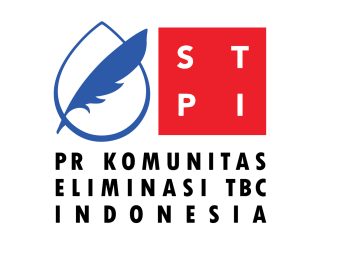Many group members are disappointed that the group must dissolve, but they recognize and commend other group members for the skills both personally developed and those developed as a team. During this time, group members experience conflict and a lack of productivity as leaders emerge and ideas are exchanged. Group members are more confident in their abilities than during the previous forming phase, meaning that disagreements will be established and a power struggle will likely occur. Members may also deviate from their originally assigned roles as they explore their own methods of completing a task.
By developing your own leadership skills, you can model collaboration best practices and help your team reach their fullest potential. Have you ever wondered why it takes some time for a new team to hit peak performance? In this article, we discuss the different stages of team development and how leaders can guide their team through those stages to increase collaboration.
Support the Commons
Team performance increases during this stage as members learn to cooperate and begin to focus on team goals. However, the harmony is precarious, and if disagreements re-emerge the team can slide back into storming. Typically, the outcome of the forming stage results in a better understanding of the group’s members and the direction of the entire team. Understanding the group’s purpose, setting goals and deadlines, determining how the team will be organized, assigning roles, and exploring available resources are activities that take place during orientation.

Sure, their opinions still clash from time to time, but they appreciate each other too much to let small disagreements get in the way. Her ideas are sometimes different from Stella’s — to everyone’s delight, as this only helps when the writers reach a creative dead end. Now, this is where things get tense for Adam, Daisy, Daniel, and Stella as they set their plan into motion — and find their opinions and personalities are at odds with each other. Everybody on the team is all ears, and they exchange opinions — but do their best to avoid direct confrontation. Due to her rank as the editor, Stella takes the lead and suggests the outline for the content plan. Yet, writers Adam and Daniel think they should take a different angle.
Scenario: You’re leading your team through the performing stage
For those group members who have previously worked together, formerly unresolved issues may even arise. Some conflict can be good as it can help work through issues, as well as determine whether or not the group will be able to work together. Ultimately, the group needs to gain clarity by working through its major issues, which allows them to move forward into the next stage. The leader’s role in team building during this stage is a significant one. The leader must stay positive and coach members in assertiveness and, where necessary, conflict resolution skills. Lencioni has described five dysfunctions of team, discussing why teams, even the best ones, often struggle.(24) The first dysfunction he describes is “absence of trust”.
Team development is how teams come together and organize themselves to meet their goals. The five stages of team development outline how team dynamics shift as work progresses and define a path forward for leaders to support their employees. Review the five stages and our tips on fostering collaboration outlined in this article to bring out the best in your team during each phase. Better yet, use a collaborative meeting tool like Fellow to build a healthy team culture and organize your biggest ideas into actionable steps. At this stage, teams solve pressing challenges, work through projects, and begin making significant strides towards their goals.
Which stage is your team in?
The meeting environment also plays an important role to model the initial behavior of each individual. Members attempt to become oriented to the tasks as well as to one another. To grow from this stage to the next, each member must relinquish the comfort of non-threatening topics and risk the possibility of conflict. The individual strengths each member brings establishes a sense of teamwork, as everybody plays a part.

Team members are asking such questions as “What does the team offer me? It might not be possible to plan an in-person meet-up, especially if your projects have short turnaround times. Create an agenda and establish a document to track ideas and comments during the meeting. Share a link to these meeting notes afterwards so that everyone has access and can review it later.
What is self-management? (7 skills to improve it)
Team members refocus on established team groundrules and practices and return their focus to the team’s tasks. Teams may begin to develop their own language (nicknames) or inside jokes. The most commonly used framework for a team’s stages of development the four stages of group development in order are was developed in the mid-1960s by Bruce W. Tuckman. Although many authors have written variations and enhancements to Tuckman’s work, his descriptions of Forming, Storming, Norming and Performing provide a useful framework for looking at your own team.

The project is officially completed.In the end, Stella, Adam, Daniel, and Daisy go their separate ways, capping off the project as a complete success in every way. Interestingly, the 5 stages of group development model can even be useful in the theater. Now, these 5 stages are vital to help you anticipate your team effectiveness. Simply put, that’s your ability to be efficient and productive with your https://www.globalcloudteam.com/ work, both as individuals and as a group. As a project progresses through different phases some team members will leave the project, others will join and some will move into new positions within the project. There is little intervention needed from leadership at this stage, but it is important to continue providing support where needed to prevent the team from lapsing back into the storming stage.
Leadership from the Proverbs: Fear of the Lord
At stage one, employees have high expectations for themselves and their colleagues. They are driven to succeed, which may cause some anxiety as they get to know their peers and settle into the team’s culture. Employees at this stage are curious and may outwardly showcase their enthusiasm and ask plenty of questions. As individuals become acclimated to their new environment, leaders should work to create a clear team structure so everyone has a good understanding of their roles. Managers should also set expectations for team communication at this time. In the Performing stage, the team begins to work individually and together as needed to make progress on planned tasks.
- In this stage, the team feels a dip in productivity — because there isn’t much left to do.
- One task we often help clients with is exploring the feasibility of developing an idea…
- Leaders need to be prepared to effectively coach team members by validating their concerns and providing tangible resolutions.
- As a new project phase starts new teams are formed and the members will go through the stages.
- A member who is knowledgeable and has authority might try to take control of the group.
- The real personalities of the team won’t be revealed until later; in the beginning, getting along with the rest of the team members is of primary importance.
- The challenge now is to move a bit faster while keeping the quality of your work high.
Lots of tools offer free trials, so use that time to experiment and check its compatibility with other products you use. By starting with a free trial, you have the freedom to learn as much as possible about the product before committing to it. By this time, the group has worked closely with one another and has developed relationships; it’s natural for feelings of insecurity to arise and for some to even feel threatened by the change. In 1975, Bruce Tuckman added a fifth stage to his Forming Storming Norming Performing model. This stage occurs when the original task of the group is completed and everyone can move on to new goals.
What are the stages of group development?
Here’s the thing, the line between certain stages can get blurred since team members evolve at different times. How they trust each other to remain accountable for their tasks without dropping the ball. After the storming stage, they recognize behavioural patterns, strengths and develop foresight for upcoming roadblocks. This way, they’ll remain high-performing while re-establishing trusted connections.
